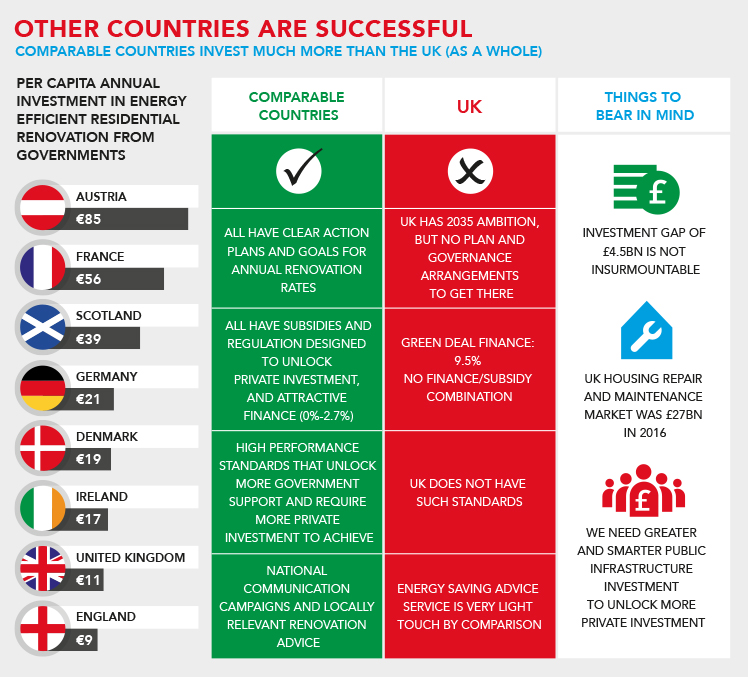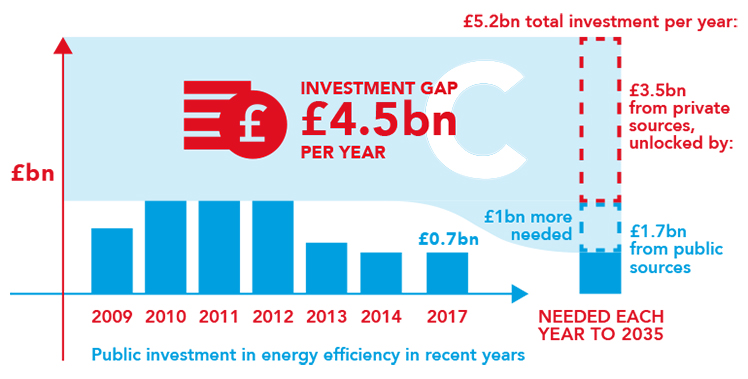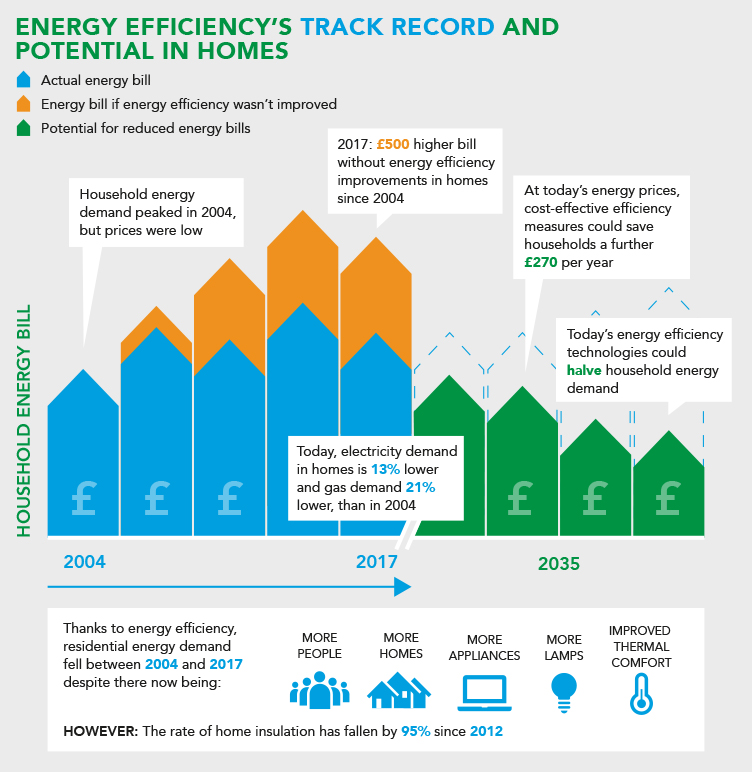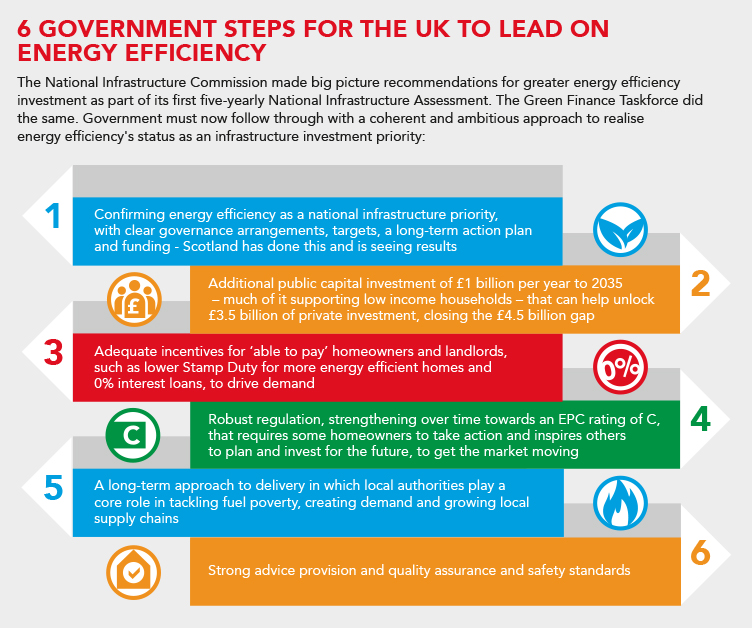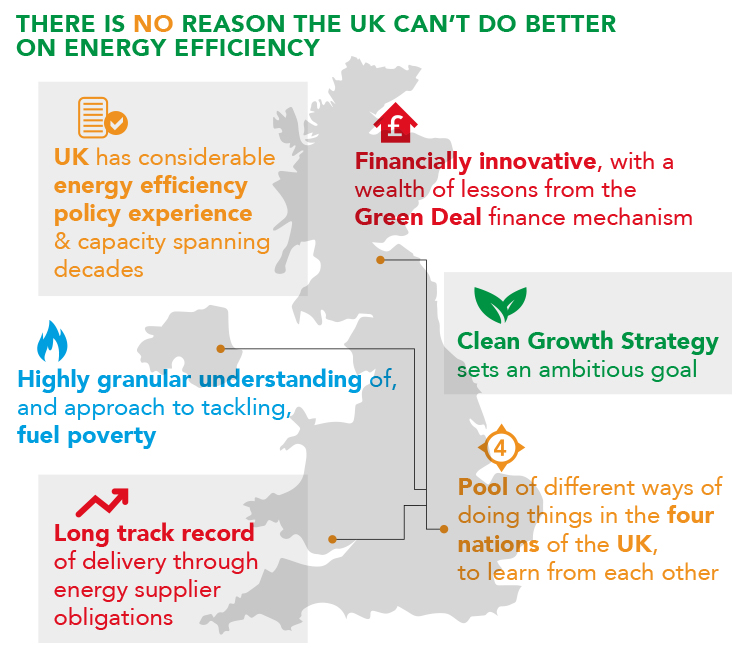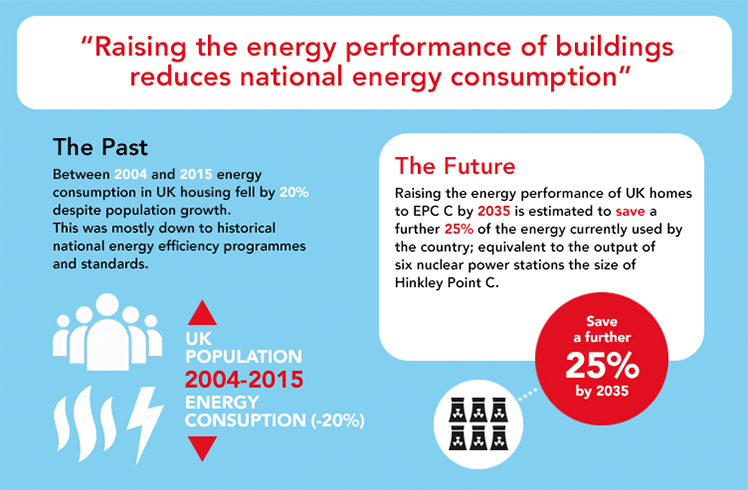As it has these benefits:
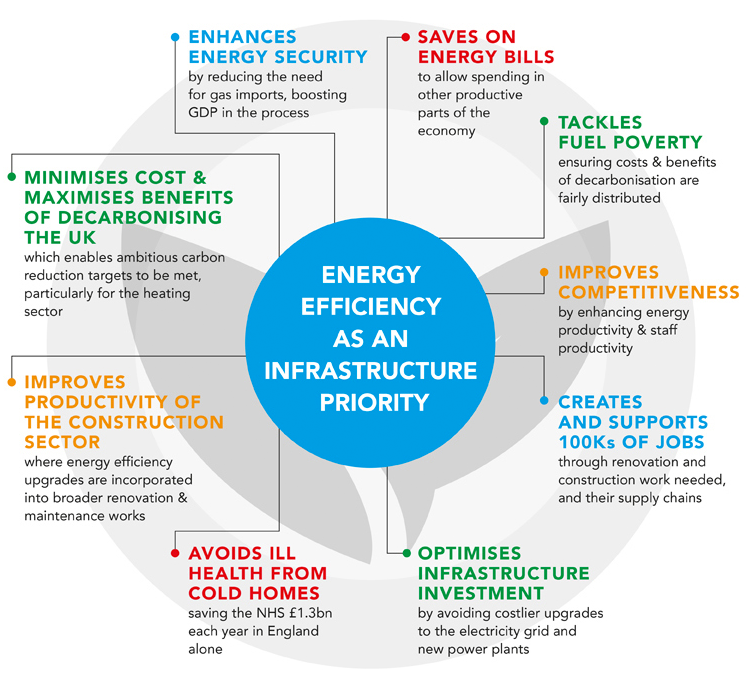

In its 2017 Clean Growth Strategy the UK government made a firm commitment to keeping energy costs in British homes and businesses down, by pledging to bring all homes up to a higher efficiency standard (EPC Band C) by 2035. What matters now is that the government puts the energy and investment into meeting this and other pledges.
Since the EEIG’s campaign launch in 2017 positive changes have been announced by UK policy makers. Scotland already has an energy efficiency infrastructure programme, whilst in Whitehall:
The Clean Growth Strategy pledged to bring all homes up to energy performance certificate standard C by 2035 and to bring all fuel poor homes (those homes in drastic need of change and where people are less able to cope with energy bills) to an EPC C standard by 2030.
More recently, the UK Prime Minister announced that government would halve energy use in all buildings by 2030 https://www.businessgreen.com/bg/news/3032709/pm-pledges-aims-to-halve-building-energy-use-by-2030.
The National Infrastructure Commission - the independent body looking at where priority government infrastructure spending should be placed in the next twenty years – has now:
The Green Finance Taskforce made strong recommendations to Government to enable the retail finance sector to mainstream the financing of home energy efficiency improvements, including:
Politicians from all parties are beginning to understand the urgency of action on energy efficiency in homes. For the first time in six years, a debate in Parliament was held on the need for the government to improve its energy efficiency measures, and cross-party consensus was reached for the need to make energy efficiency infrastructure investment a priority.
The Committee on Climate Change (the independent body that advise the government on how to most cost effectively meet its climate change goals) has said that it is one of the most important areas to tackle in the next decade – “an open goal” - if the UK is to hope to reach its climate targets.
Progress has been positive, but it is still insufficient, and more pressure needs to be put on government and politicians to act on this issue.
There is still a significant policy and investment gap that needs to be addressed:
The Government’s Comprehensive Spending Review will begin in Spring 2019 and will determine Whitehall departmental budgets for the next five years. As a crucial cross-cutting issue, energy efficiency must not fall through. The UK is still far behind other leading European countries on tackling energy efficiency. The graphic below makes the comparison:
